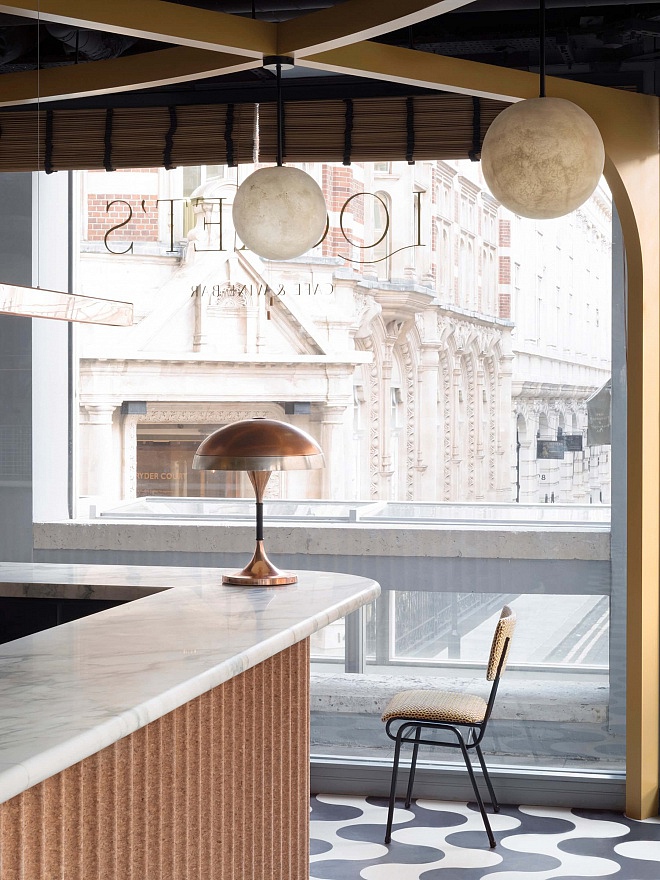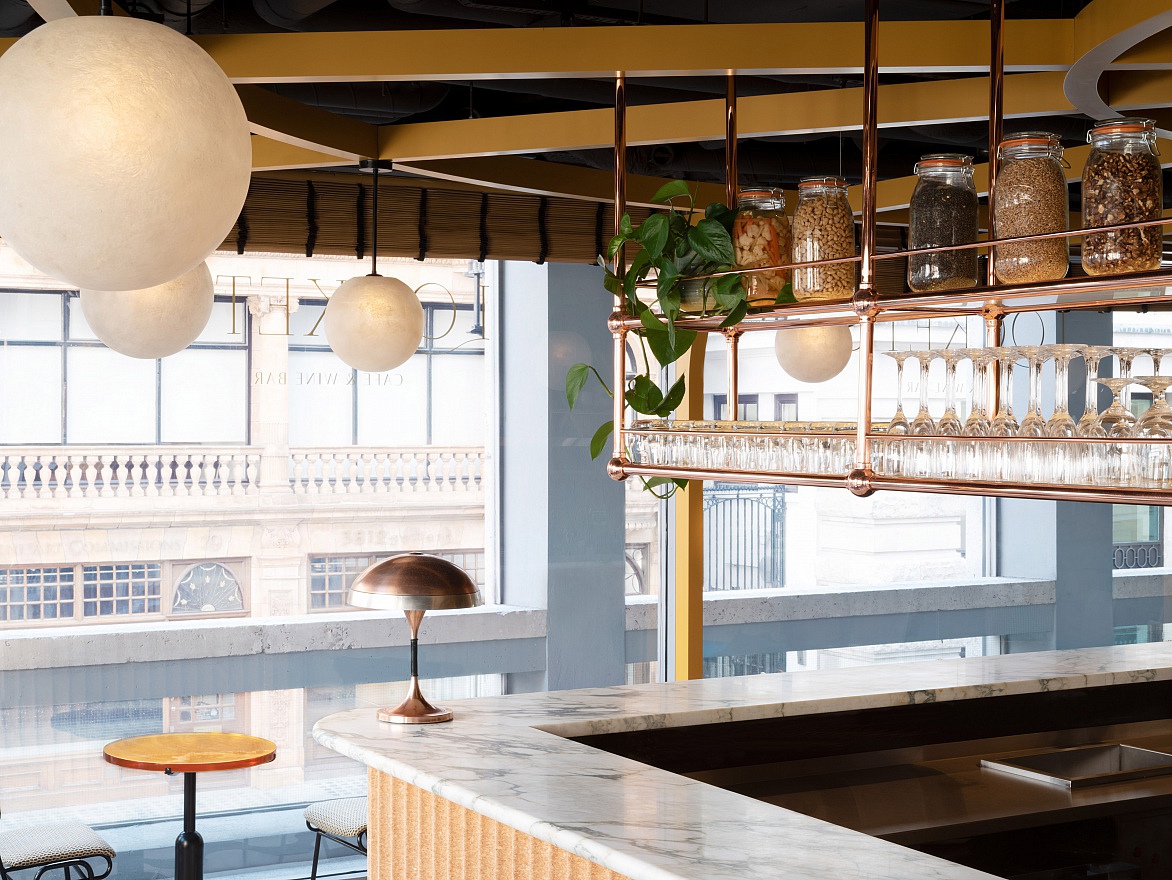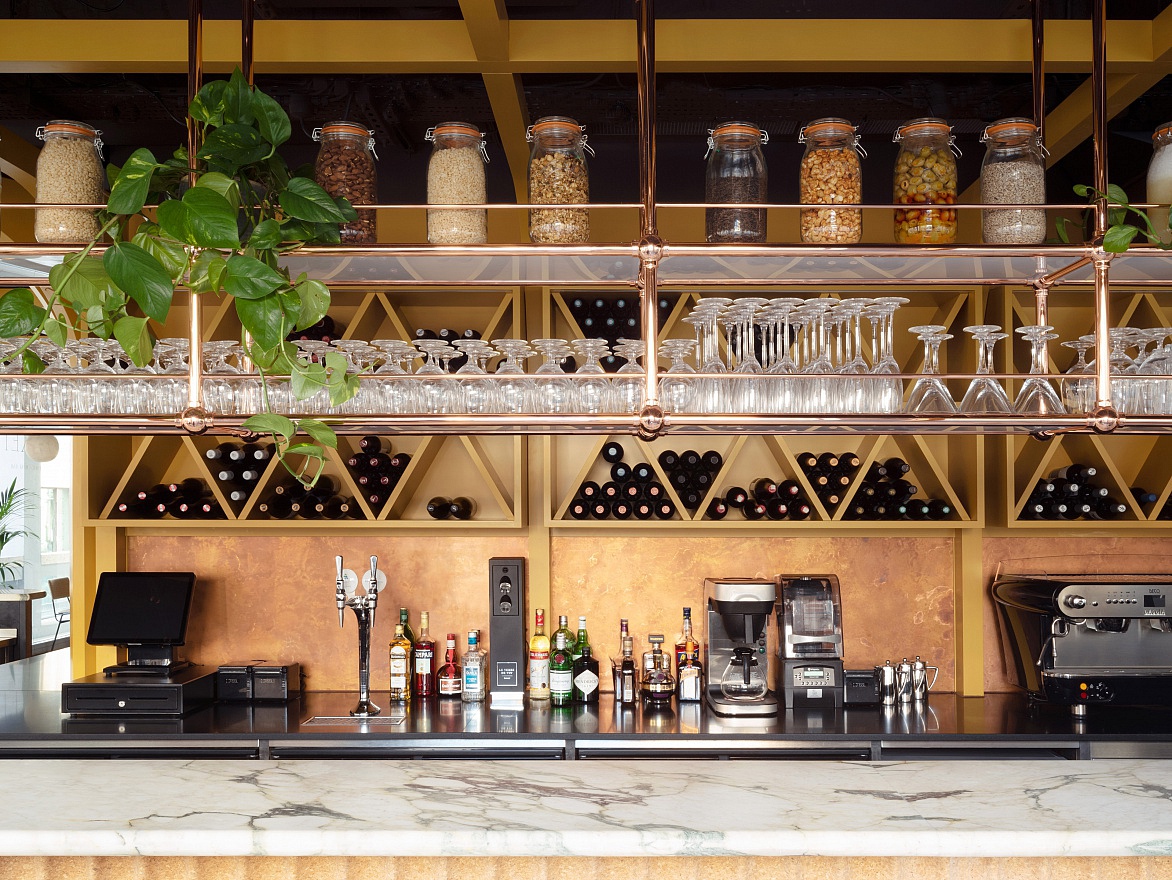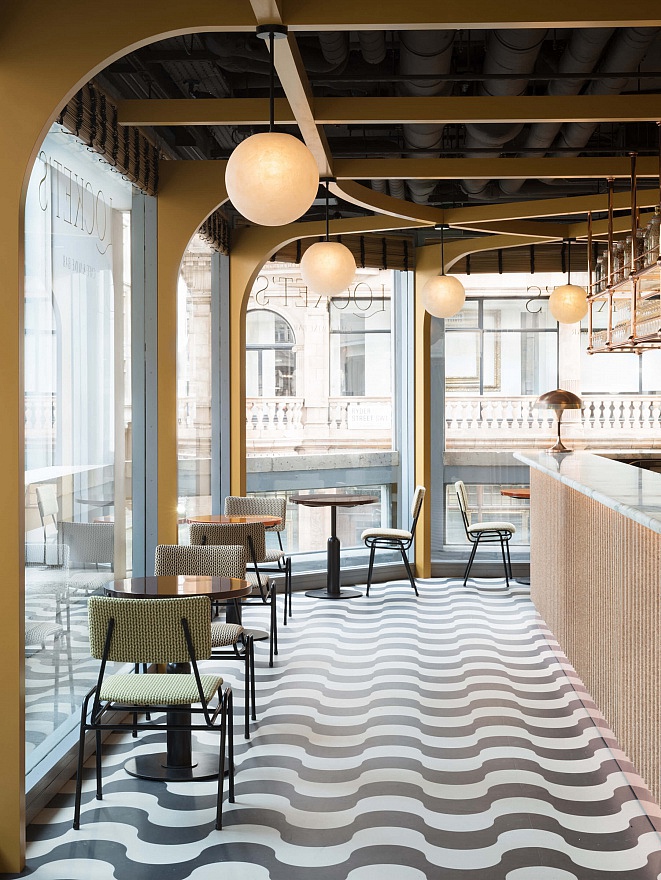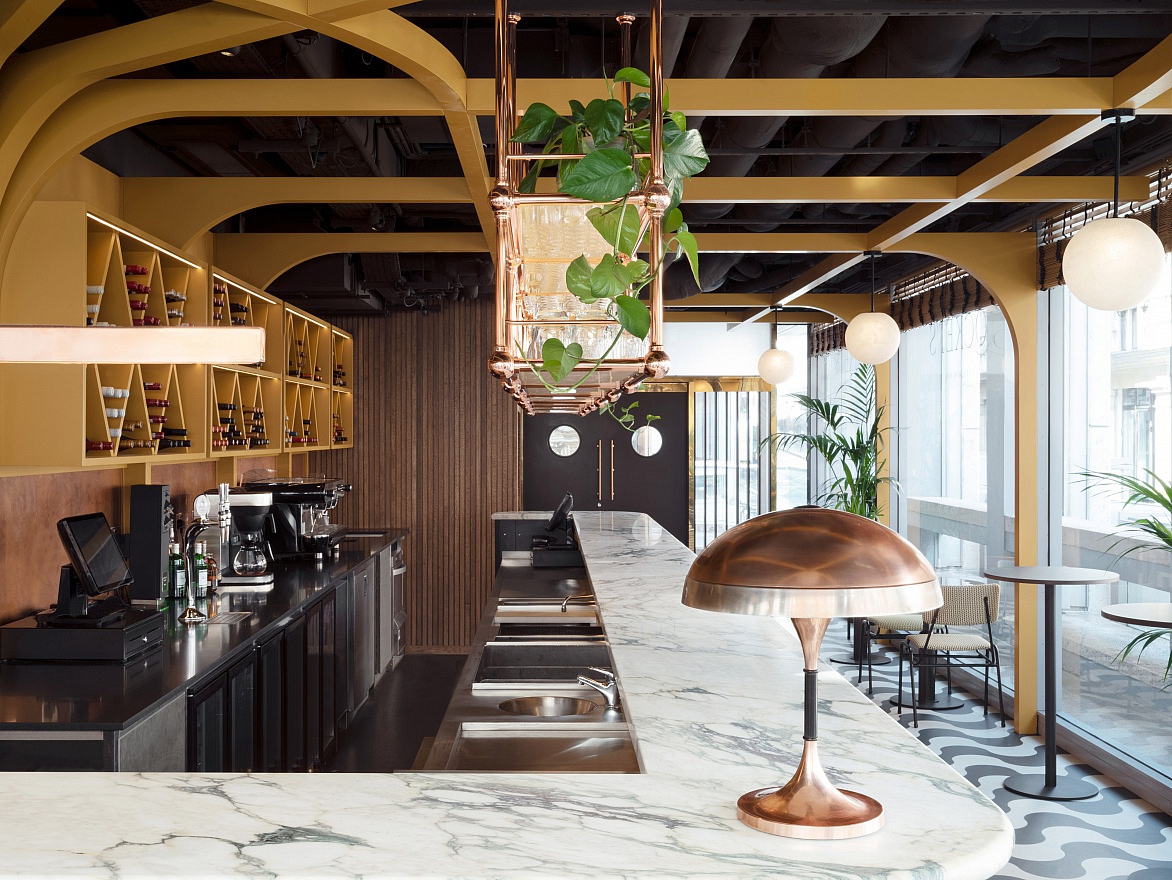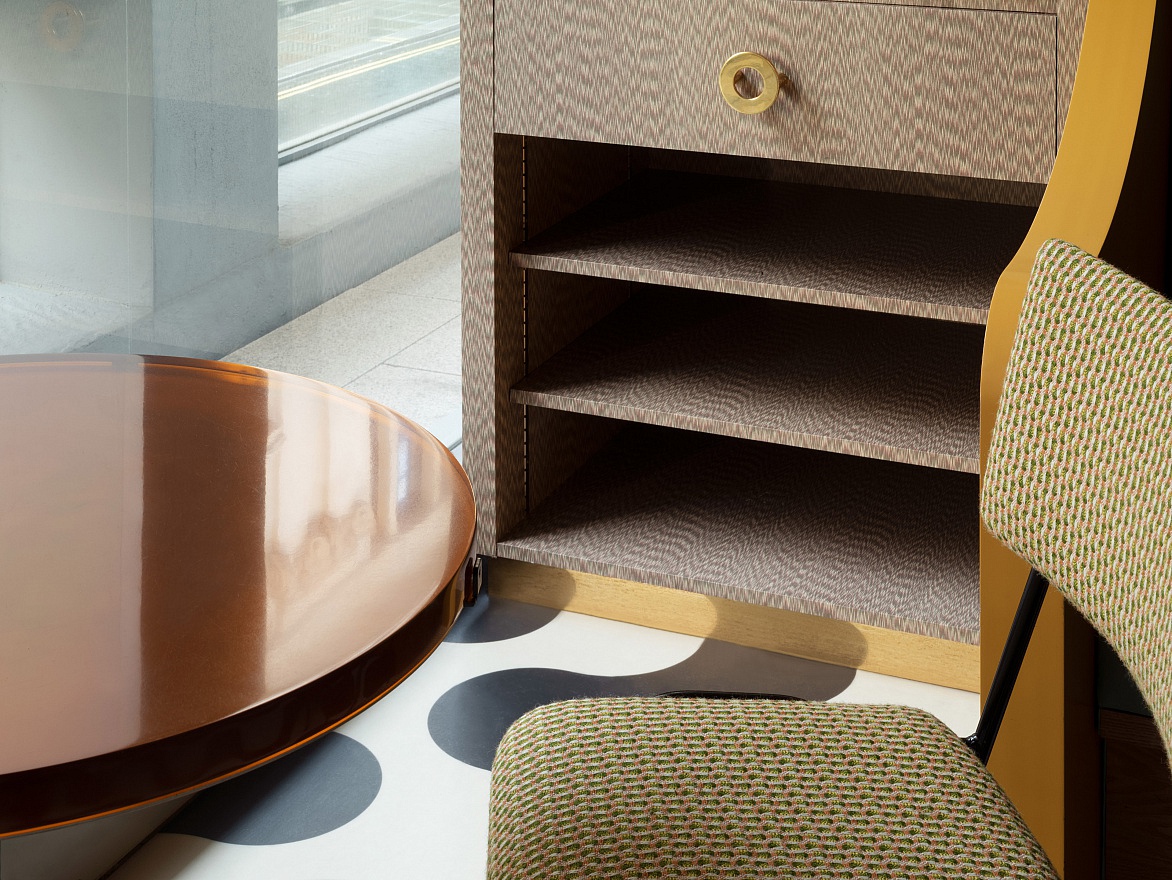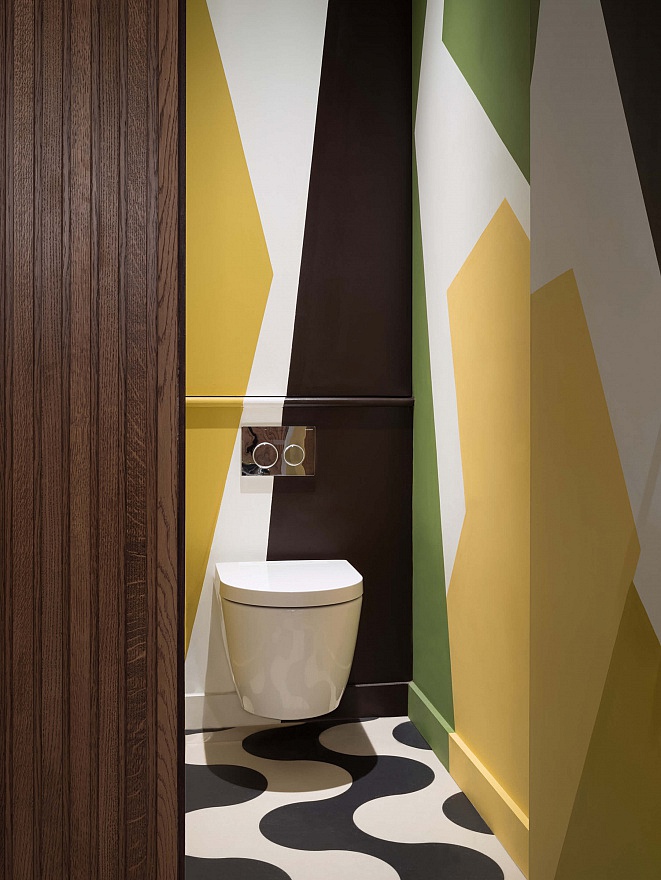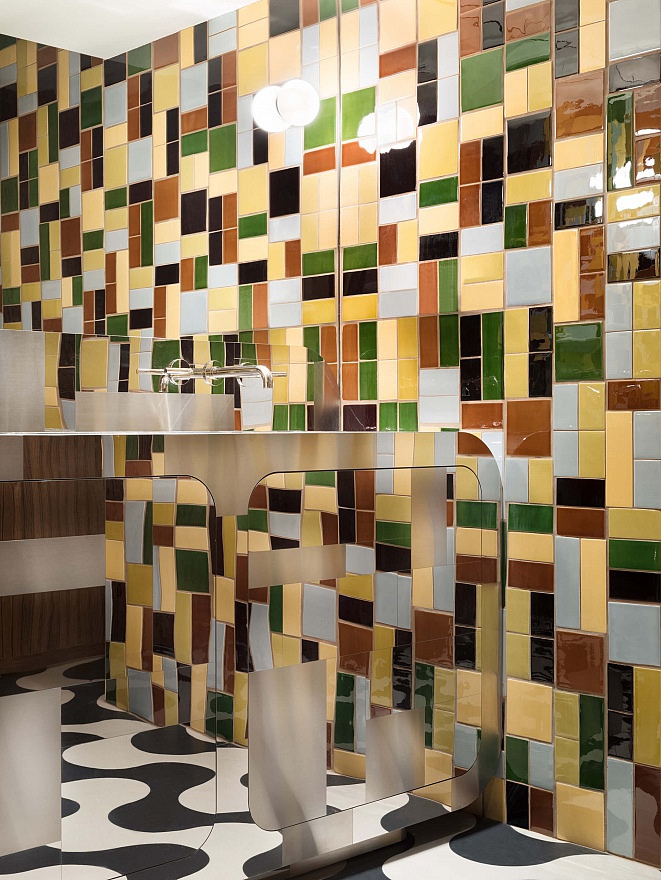Locket’s St James's
Behind the grand, often ancient buildings of St James’s stands a great monument to twentieth-century brutalism. Designed by Alison and Peter Smithson in 1964, this fourteen storey tower block, flanked by two low rise buildings, has now been radically reinvented and suitably renamed. Locket’s wine bar and restaurant – from the family team behind Wilton’s and Franco’s on Jermyn Street – sits within the double height reception area of the original building and opens out onto Smithson Plaza.
The Smithson’s influence runs throughout Locket’s interior. Sudgen House (1955) inspires the monochrome polyvinyl flooring and veneered timber paneling. The House of the Future (1956) – along with the mid-century sensuality of Villa Borsani – inspire the curved lines and bull-nosed edging of the bar tops, as well as the scalloped detailing of the flooring and wall-mirroring – all of which bring a feminine curve to traditionally masculine lines. Working within the fenestration of the building’s original façade, timber ribs were used to emphasise the subdivision of the glazed elevations. These ribs wrap across the ceiling to redefine the interior space and frame the surrounding streetscapes. By extending rather than augmenting the existing structure, the studio has carefully honoured both the building’s heritage and its architectural philosophy.
Drawing on the visual vernacular of the London private members’ clubs which haunt this part of London and also taking inspiration from the colours of St James’ Park, the studio chose a palette of copper, cork and green veined marble coupled with an array of autumnal shades. The dark and light amber resin tabletops were a bespoke specialist manufacture, while the handwoven fabrics, derived from sixties styles and inspired by gentlemen’s outfitter’s weaves, were drawn directly from Tibor’s archives – one of the few textile makers still working on handlooms. These fabrics not only cover the seating, but inspire the flame-stitched veneer wall-cladding at end of bar. Milan’s grand entryways inspired the lacquered brass door detailing, while mid-century decorative table lights wear shades of parchment and across the space a palette of moss greens and burnt yellows combine with cork and patinated copper work to create a warm, lively, intimate atmosphere.
Winner of Best Leisure Interior London at the UK Property Awards 2020.
Shortlisted for the Restaurant & Bar Design Awards 2020.
Longlisted for the Dezeen Awards 2020 (Bar Interior).
